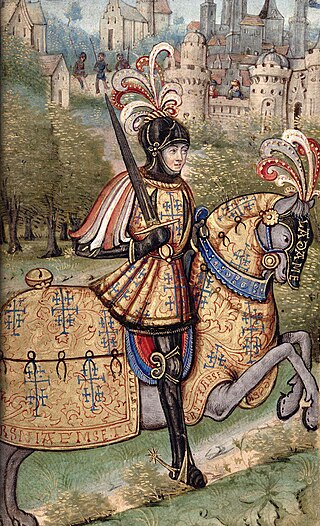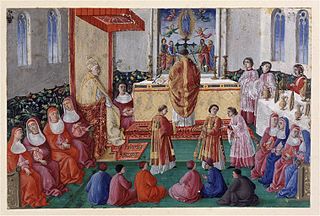
René II was Count of Vaudémont from 1470, Duke of Lorraine from 1473, and Duke of Bar from 1483 to 1508. He claimed the crown of the Kingdom of Naples and the County of Provence as the Duke of Calabria 1480–1493 and as King of Naples and Jerusalem 1493–1508. He succeeded his uncle John of Vaudémont as Count of Harcourt in 1473, exchanging it for the county of Aumale in 1495. He succeeded as Count of Guise in 1504.

Philip the Upright was an Elector Palatine of the Rhine from the house of Wittelsbach from 1476 to 1508.
George Grey, 2nd Earl of Kent, was the son of Edmund Grey, 1st Earl of Kent and Lady Katherine Percy. He was the Second Earl of Kent from 1490 to 1505.
The decade of the 1480s in art involved some significant events.

Margaret of Bavaria was a princess of Bavaria-Landshut and by marriage Princess of the Palatinate.

Pope Sixtus IV created 34 new cardinals in eight consistories:

The Mayor of Barnstaple together with the Corporation long governed the historic Borough of Barnstaple, in North Devon, England. The seat of government was the Barnstaple Guildhall. The mayor served a term of one year and was elected annually on the Feast of the Assumption of the Virgin by a jury of twelve. However Barnstaple was a mesne borough and was held by the Mayor and Corporation in chief not from the king but from the feudal baron of Barnstaple, later known as the lord of the "Castle Manor" or "Castle Court". The Corporation tried on several occasions to claim the status of a "free borough" which answered directly to the monarch and to divest itself of this overlordship, but without success. The mayor was not recognised as such by the monarch, but merely as the bailiff of the feudal baron. The powers of the borough were highly restricted, as was determined by an inquisition ad quod damnum during the reign of King Edward III (1327–1377), which from an inspection of evidence found that members of the corporation elected their mayor only by permission of the lord, legal pleas were held in a court at which the lord's steward, not the mayor, presided, that the borough was taxed by the county assessors, and that the lord held the various assizes which the burgesses claimed. Indeed, the purported ancient royal charter supposedly granted by the Anglo-Saxon King Æthelstan (d.939) and held by the corporation, from which it claimed its borough status, was suspected to be a forgery.
A visdomino was the representative of the Republic of Venice in the city of Ferrara from the late 13th century until 1509.
Sebastiano Badoer was a Venetian patrician, diplomat and humanist. He served as ambassador four times to the Holy See, thrice to Milan and once each to Naples, Hungary, France and the Empire. He left behind few writings but ample testimonies of his learning.
This page is based on this
Wikipedia article Text is available under the
CC BY-SA 4.0 license; additional terms may apply.
Images, videos and audio are available under their respective licenses.





